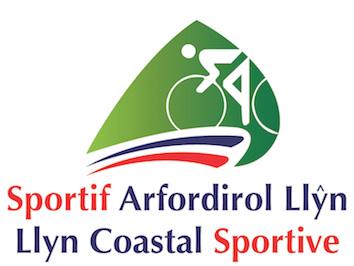Porth Neigwl, or Hell's Mouth is a highlight of the Llyn Coast Path, and indeed the entire Wales Coast Path. A sandy beach stretching for almost 4 miles from Mynydd Rhiw to the Cilan Headland, it can be stunningly beautiful walk on a good day with a low tide. Unfortunately Mother Nature doesn't always make things easy, and access down to beach can be difficult from its western end. The cliffs at the northern side of the beach are made from glacial clay and are constantly eroded by the strong tides and waves that make the beach so attractive to surfers. The path that lead down from the western car park has now suffered severe slippage and getting up and down it can be a muddy scramble, as the campers we met the other day discovered.
 |
| These campers were trying to get back up to the site above. I would imagine that it would be even more unpleasant going downhill in wet weather. |
Although there is an inland route for the Coast Path that can be used at high tide, its a shame not to include this magnificent beach in a walk around the coast if conditions allow. As it is such a highlight for our walkers, Peter and I set out to find a more permanent route down to its western extremity.
After parking at the new car park below Plas yn Rhiw we headed up towards the entrance. Opposite the entrance to the manor house there is a bridleway from the main road that runs past the stone out-buildings in the centre of the picture below, and then snakes its way down the hillside to a boat launching area at the western end of the beach.
 |
| The bridleway in front of the stone building with the black doors is not signposted but is still marked as a right of way on OS maps. |
 |
| The path is steep but has a good surface. |
 |
| After a hairpin bend, the path heads north to the beach. |
 |
| The boathouse at the bottom of the track. Gorgeous location. |
 |
| This is the slipway down to the beach. |
 |
| As we continued east it became apparent why few walkers choose this route. The beach is covered with large, loose boulders here which makes picking your way through quite difficult. It's very easy to turn your ankle as the stones shift under your weight. |
 |
| Watch your step! |
 |
| As you continue east some sandy stretches appear. It was nice to finally be able to look up from our feet to enjoy the view! |
 |
| Finally we were on firm sand. Because the tide covers most of the beach the sand stays wet and firm, making it easier to walk on than the very dry, soft sand found on some beaches. |
Neither of us fancied scrambling up the muddy cliffs, so we went back the way we had come. Despite the danger and difficulty of walking over the large boulders at the western end, we think this could potentially make a good access route to the beach. Perhaps Gwynedd Council could send a bulldozer to clear a path through if they feel there is enough demand for it? We certainly hope so, as Porth Neigwl really is one of the most magnificent beaches you could ever hope to see, and it would be great if more people could enjoy it.























































